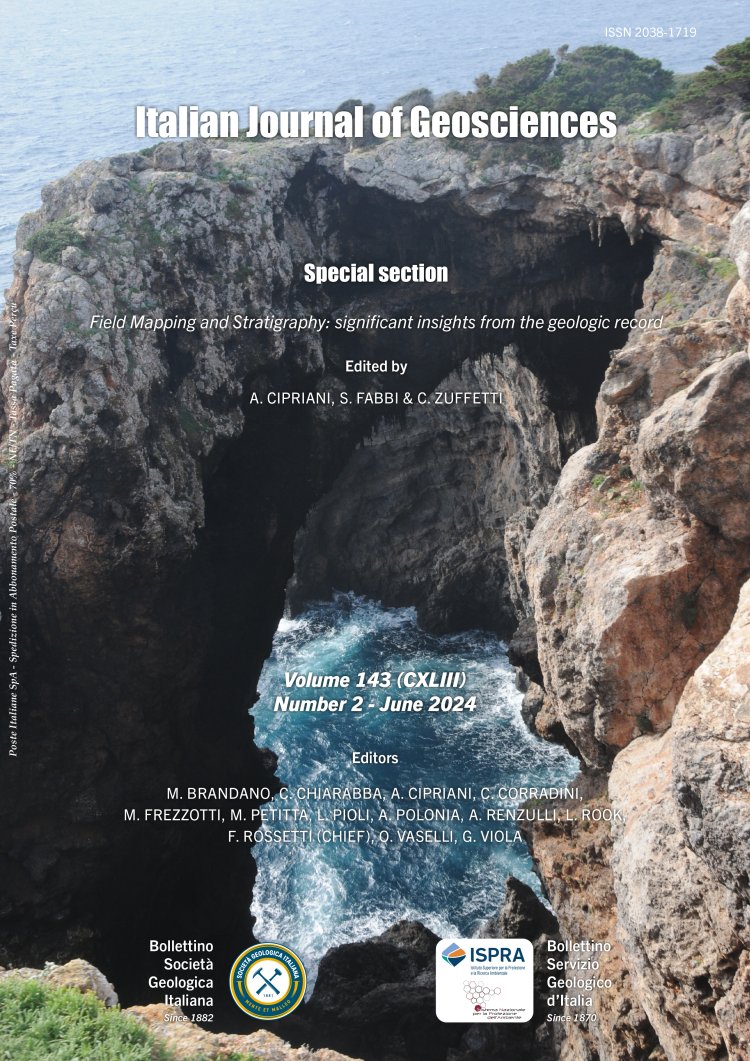
Significance of the Calcare Cavernoso: stratigraphic-structural setting and role as tectonic chaotic unit in the evolution of the Northern Apennines (Italy)
Gianluca Cornamusini1,2, Lorenzo Milaneschi3,1, Paolo Conti1,2 & Giovanni Pio Liberato1
1Dipartimento di Scienze Fisiche, della Terra e dell’Ambiente, Università di Siena, Via Laterina, 8, Siena.
2Centro di GeoTecnologie, Università di Siena, Via Vetri Vecchi, San Giovanni Valdarno (AR).
3Dipartimento di Scienze della Terra, Università di Firenze, Via La Pira, 4, Firenze.
Corresponding author e-mail: lorenzo.milaneschi@unifi.it
Volume: 143 (2024) f.2
Pages: 187-209
Abstract
The Calcare Cavernoso, a well-known and controversial lithostratigraphic unit of the Northern Apennines, represents a thick layer with a predominantly cataclastic brecciated texture, that is located at the base of the Tuscan Nappe and that plays an important role in the evolution of the Northern Apennines. Due to its primary lithological features, this lithostratigraphic unit favored the development of regional tectonic detachments during the compressional and extensional phases that affected the orogenic chain. It consists of slightly fractured to fully cataclastic limestone and dolomitic limestone originated from Upper Triassic dolostones, limestones and gypsum/anhydrites as a result of the interaction of tectonic and diagenetic-autoclastic processes. On the basis of stratigraphic-structural field relationships and textural characteristics of two significant areas in southern Tuscany, it can be pointed out how the Calcare Cavernoso there exhibits the features of a tectonic large-scale breccia in which diagenetic and autoclastic processes were certainly important, but are subordinate to, and superimposed by the cataclastic process. The recognition of different breccia types, examined through textural and image analyses, combined with field mapping has made it possible to discriminate between breccias of different origin (tectonics vs. sedimentary) and to understand their origin and role in the stratigraphic-structural framework of the Northern Apennines. This interpretation, which emphasises a main tectonic role for the Calcare Cavernoso of southern Tuscany, allows us to characterise it as a tectonic chaotic unit or lithostratigraphic complex with features of a broken-and-transformed formation, mainly derived from the disruption of Upper Triassic primary evaporite-dolomitic strata at the base of the Tuscan Nappe. This new interpretation of the Calcare Cavernoso requires a different approach for geological mapping in terms of formal lithostratigrapic units and also in terms of geomechanical parameters.
Keywords
tectonic chaotic unit, stratigraphic-tectonic setting, Calcare Cavernoso, southern Tuscany, Northern Apennines.
Get Full Text